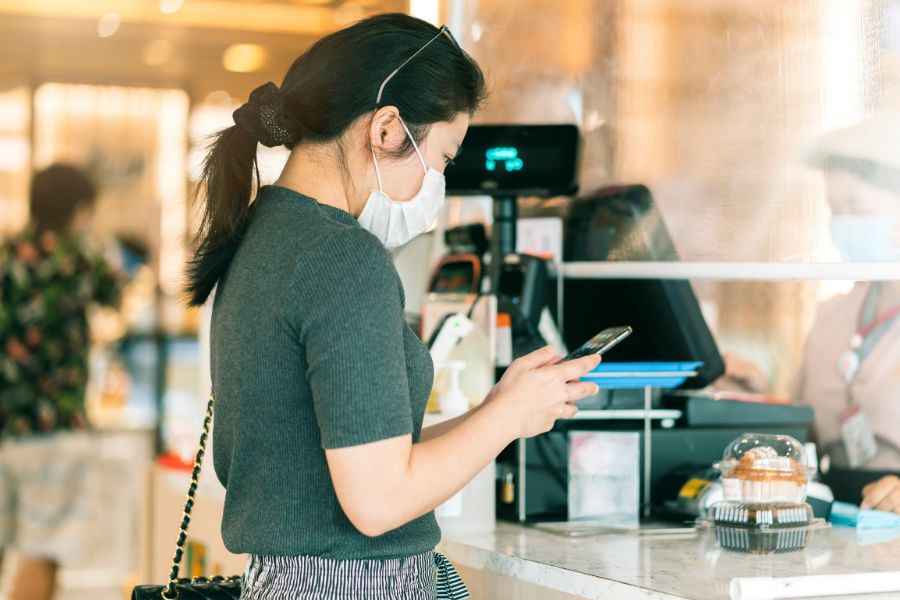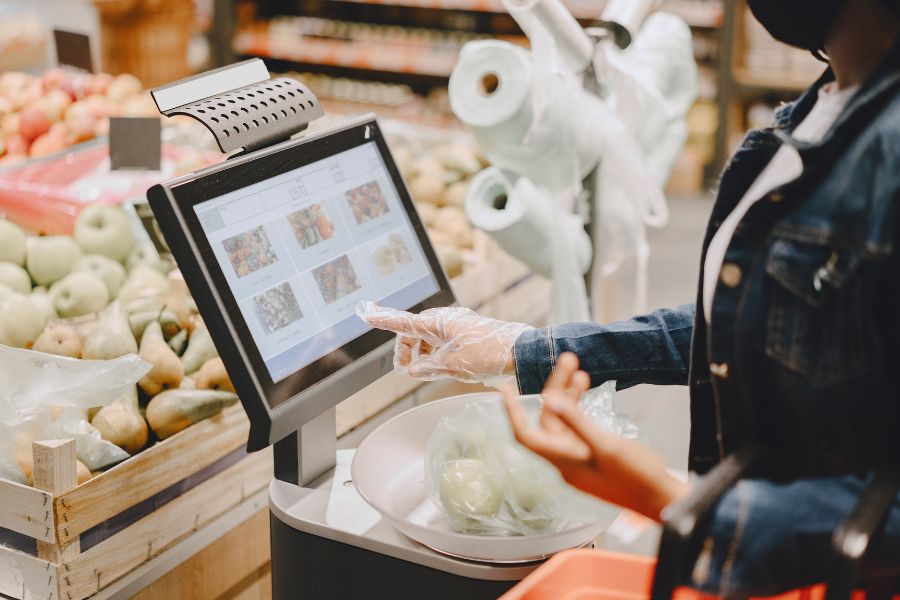Thailand’s fashion market is dynamic and highly competitive, driven by a mix of traditional craftsmanship, fast fashion trends, and a booming eCommerce sector. With consumers expecting seamless shopping experiences both online and offline, businesses must keep up with personalized customer interactions and advanced technologies. Managing these aspects efficiently can be challenging, especially for Shopify-based stores juggling multiple sales channels. Thai fashion retailers can improve operations, reduce errors, and elevate customer experiences if they have a suitable Shopify POS software Thailand. This guide explores some of the best options available, highlighting their strengths and limitations to help you find the best fit for your business.
Highlights:
- Managing inventory, payments, and customer expectations across both online and offline stores can be complex, especially with Thailand’s fast-changing fashion trends and diverse consumer demands.
- A Shopify POS software Thailand helps fashion retailers synchronize sales channels, streamline operations, and provide a seamless shopping experience.
Why Fashion Businesses in Thailand Need a Shopify POS
Growing Fashion Market in Thailand
The Thai fashion market is projected to reach $2.53B in 2025 and grow at a 10.63% CAGR, hitting $3.79B by 2029.

Thailand’s fashion industry is one of the most dynamic in Southeast Asia, driven by a combination of local and international brands, a strong tourism sector, and the increasing adoption of eCommerce.
- Expanding Middle-Class & Disposable Income: With a rising middle-class population and increasing disposable income, Thai consumers are spending more on fashion, both in-store and online.
- Tourism as a Key Growth Driver: Thailand attracts millions of international tourists annually, many of whom engage in retail shopping. This creates demand for seamless, multilingual, and omnichannel shopping experiences.
- ECommerce & Social Commerce Boom: Platforms like Lazada, Shopee, and Instagram Shopping are shaping consumer habits. Businesses that don’t integrate online and offline experiences risk losing competitive advantage.
- Shift Towards Omnichannel Shopping: Thai consumers expect to browse online, check availability in-store, and make purchases seamlessly across channels. An integrated POS system is crucial for meeting these expectations.
Key Challenges for Fashion Retailers
Despite the market’s potential, fashion retailers face several operational hurdles:
- Managing Omnichannel Inventory: Many retailers struggle to synchronize stock between physical stores and online platforms, leading to overstocking, stockouts, and poor customer experience.
- Payment Preferences & Cashless Trend: Thai consumers use a mix of cash, e-wallets (PromptPay, TrueMoney, Rabbit LINE Pay), credit cards, and BNPL (Buy Now, Pay Later). A POS system must support diverse payment methods.
- High Competition from Global Brands: International brands like Zara, Uniqlo, and H&M dominate the market, requiring local fashion businesses to adopt smart, tech-driven retail solutions to compete. Uniqlo runs frequent promotions in stores and online, with 31 branches in Bangkok and 17 in other major cities.
- Seamless Customer Experience Expectation: Shoppers expect loyalty programs, personalized recommendations, and the ability to return or exchange items across different locations effortlessly.
- Fragmented Sales Channels: Thai retailers sell through marketplaces, social media, and physical stores, making it difficult to track customer behavior, order history, and sales performance in real-time.
How Shopify POS Helps Fashion Businesses
Shopify POS software Thailand is designed to address these challenges and empower fashion retailers in Thailand with an all-in-one solution. With the integration of online and offline operations, supporting diverse payment options, enhancing customer engagement, and providing powerful analytics, Shopify POS helps fashion businesses stay competitive in an evolving market.
- Shopify POS keeps inventory updated across all sales channels, preventing mismatches and overselling. Stock levels adjust instantly with each purchase, avoiding errors and out-of-stock issues. Customers can place orders online and pick them up in-store or choose local delivery, giving them more flexibility while keeping operations smooth.
- Shopify POS supports local e-wallets, QR codes, and global credit cards, making transactions smooth for both businesses and customers. Cash and split payments add flexibility at checkout, catering to different purchasing preferences. Integration with BNPL solutions like Atome and Pace helps shoppers manage their budgets while increasing sales opportunities for retailers.
- Shopify POS keeps customer profiles in one place, making it easier to tailor shopping experiences. Built-in loyalty programs, gift cards, and discounts encourage repeat purchases. Returns and exchanges are hassle-free across different store locations, improving customer satisfaction. Real-time sales analytics help businesses track trends, adjust pricing, and manage stock effectively.
- Shopify POS allows retailers to operate from pop-up stores, malls, and events without restrictions. Staff can manage orders and check inventory directly from mobile devices, improving service speed. Traditional cash registers are no longer necessary, giving businesses greater flexibility in how and where they sell.
Top 5 Shopify POS Software Options in Thailand for Fashion Businesses
ConnectPOS SEA
ConnectPOS SEA provides a Shopify-integrated POS solution tailored for Thailand-based businesses, offering extensive customization, real-time data synchronization, and multi-device compatibility. Designed for omnichannel operations, it supports smooth transitions between online and physical stores, accommodates various local and international payment methods, and enhances inventory control.
With a user-friendly interface and flexible deployment, this kind of Shopify POS software Thailand suits retailers looking for an adaptable and scalable system in the country’s growing eCommerce market.
Pros and Cons:
Pros
- Omnichannel Synchronization – Unifies online and offline sales to keep customer and inventory data consistent.
- Real-Time Inventory Tracking – Prevents stockouts and overstocking by updating inventory across multiple locations instantly.
- Built-in Loyalty Programs – Supports tiered memberships, customer segmentation, and personalized promotions to retain shoppers.
- Automated Operations – Reduces manual work, streamlines shift management, and assigns role-based staff permissions.
- Customizable POS System – Modular design allows businesses to tailor features to their specific needs.
- Comprehensive Reporting & Analytics – Delivers real-time insights into revenue, sales trends, and store performance.
- Support for Local & International Payments – Accepts QR payments, credit cards, cash, and e-wallets like TrueMoney, PromptPay, and Rabbit Line Pay.
- Offline Mode – Keeps sales running smoothly, even when the internet is unstable.
- Multi-Store & Multi-Warehouse Management – Allows businesses to manage stock, pricing, and promotions across different locations effortlessly.
Cons
- Some advanced features may require additional configuration.
- There is no hardware provided.
ConnectPOS SEA Pricing for Shopify
- Standard: $39/month per register
- Advanced: Custom pricing based on business needs
Magestore POS
Magestore’s Shopify POS software Thailand offers a Shopify-like experience with added flexibility, making it a strong choice for businesses in Thailand. Its web-based, Progressive Web App (PWA) technology allows it to run on any device with a browser and supports various POS peripherals.
The system syncs sales data directly with Shopify without third-party connectors and supports multiple payment options, including Stripe, Square, Authorize.net, Dojo, and Tyro. This adaptability makes it well-suited for Thailand’s diverse retail landscape, where businesses need reliable and customizable POS solutions.
Pros and Cons
Pros
- Syncs sales data with Shopify without requiring third-party connectors.
- Works with various payment processors, including Stripe, Square, and Authorize.net.
- Supports multilingual translation.
- Runs on any device with a web browser, including PCs, laptops, and tablets.
- Customizable to meet business requirements.
- No transaction fees or hidden charges.
- Accepts in-store payments via cash, credit/debit cards, and checks.
- Provides a 30-day free trial and real-time support in the SEA region.
Cons
- Payment processor options are not fully displayed in the interface, requiring direct contact with Magestore for specific integrations.
- Some features, like omnichannel gift cards, are unavailable due to Shopify’s API restrictions.
- May require Magestore team support for initial setup.
Magestore POS Pricing for Shopify
- Lite: $15/month (1 location)
- Pro: $50/month per location
Lightspeed POS
Lightspeed POS is a strong option for medium to large businesses in Thailand handling high order volumes and requiring advanced features beyond basic POS functions. Its robust inventory management and reporting tools efficiently manage extensive SKU counts, with industry-specific modules catering to various business needs. While it supports third-party payment processors, businesses must either adopt Lightspeed Payments or pay a monthly fee per location, which could impact long-term costs.
Pros and Cons:
Pros
- More advanced inventory management than Shopify POS, including average cost tracking, serialized inventory, bundled product sales, vendor returns, and work orders.
- Over 40 customizable reports covering sales, customers, inventory, and employee performance, with filtering by day, week, or month.
- A simple and user-friendly interface.
Cons
- Higher subscription costs than many other POS systems, with no free trial.
- Additional fees for using third-party payment processors instead of Lightspeed Payments.
- A complex setup and interface requiring time to learn.
- Long-term contract commitments.
Lightspeed POS Pricing:
- Basic: $109/month per location/register
- Core: $179/month per location/register
- Plus: $339/month per location/register
Square POS
Square POS is Shopify POS software Thailand that works well for small Shopify merchants in Thailand with low-ticket sales who want an affordable and easy-to-use system. The flat-rate pricing, built-in POS tools, integrations, and reporting make it a practical choice for those starting out.
While setup is straightforward, processing fees can add up as businesses grow. Integration with Shopify covers inventory but requires a third-party connector, leading to manual data transfers for full functionality. Thailand-based businesses should also consider local payment preferences and regulatory requirements when using Square POS.
Pros and Cons:
Pros
- A free plan includes inventory management, an online store, POS software, and a card reader.
- No monthly, sign-up, or PCI compliance fees.
- Basic POS hardware without ongoing costs.
- Does not lock merchants into long-term contracts.
- A simple and easy-to-use interface.
Cons
- Works only with Square Payments, limiting payment processor options.
- Needs a connector or middleware for Shopify integration, increasing the risk of data syncing issues.
- High payment processing fees.
- Does not run on Windows desktops, only on iOS and Android.
Square POS Pricing:
Software: Free ($0/month) but requires Square Payments, as it cannot function separately.
Processing Fees
- Card present: 2.6% + 10 cents per transaction.
- Card not present: 2.9% + 30 cents per transaction.
- Keyed in: 3.5% + 15 cents per transaction.
Merchants can expand Square POS capabilities with free and paid extensions such as loyalty programs, email marketing, shift management, and payroll services.
EPOS Now
EPOS Now is a cloud-based Shopify POS software Thailand designed for businesses of all sizes, offering flexibility and ease of use. It supports retail, hospitality, and service-based industries with essential features like real-time inventory tracking, integrated payment processing, and detailed reporting. The system is compatible with multiple devices, including tablets and desktop terminals, allowing businesses to operate efficiently in-store and online.
Pros and Cons:
Pros:
- User-friendly interface for quick staff training
- Cloud-based access for remote management
- Comprehensive inventory management with real-time tracking
- Customizable reports for data-driven decision-making
- Supports multiple payment providers, including third-party integrations
- Scalable for various industries (retail, hospitality, etc.)
- Works on multiple devices (PCs, tablets, POS terminals)
Cons:
- Higher costs for additional features beyond the basic plan
- Limited offline functionality if internet connectivity is lost
- Customer support may require additional fees for premium services
- Some integrations require third-party apps, increasing complexity
- May have a learning curve for advanced customizations
Pricing
EPOS Now offers flexible pricing options to accommodate various business needs. The Complete System package is available for a one-time payment of $999 or a monthly fee of $72 over three years. This package includes a touchscreen POS system, secure cash drawer, and high-speed printer.
FAQs
What features should a fashion retailer look for in a Shopify POS software Thailand?
Fashion retailers should prioritize real-time inventory management, omnichannel sales support, multiple payment options (including local gateways), and customer loyalty features.
Can Shopify POS software support multi-store and warehouse management?
A: Yes, many Shopify-integrated POS systems, such as ConnectPOS and Lightspeed POS, offer multi-store and warehouse management to track inventory across locations.
Which Shopify POS system is best for small fashion businesses in Thailand?
A: Square POS is a good choice for small businesses due to its affordability and ease of use, but it has limited local payment options. ConnectPOS and Magestore POS also provide budget-friendly, flexible solutions.
Conclusion
In summary, choosing the right Shopify POS software Thailand for businesses in fashion helps manage in-store sales, create a better shopping experience, and reduce manual work like inventory tracking. Discussing options with your team can help identify the best match for your business.
For small business owners working with tight budgets, selecting a cost-effective and easy-to-use system makes a difference. Reliable customer support is also important, as learning to operate a new system can take time.
Looking for a POS that works seamlessly with Shopify? ConnectPOS SEA provides a flexible and feature-rich solution designed to support both online and offline sales. Contact us to explore how it can help your business grow today!





